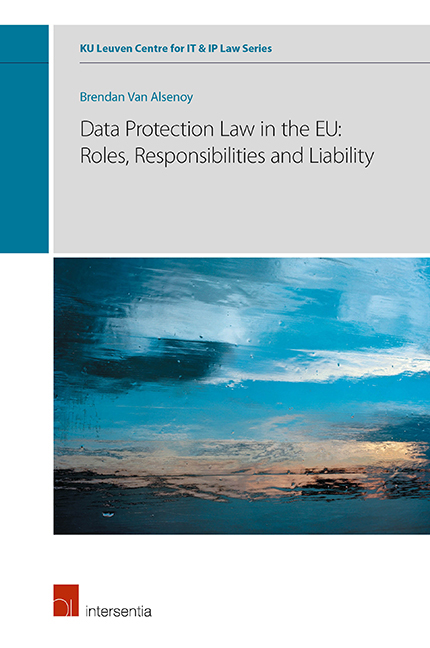Book contents
- Frontmatter
- Foreword
- Note to the Readers
- Acknowledgments
- Abstract
- Contents
- PART I INTRODUCTION
- PART II STATE OF THE ART
- PART III HISTORICAL-COMPARATIVE ANALYSIS
- Chapter 1 Introduction
- Chapter 2 The Emergence of Data Protection Law
- Chapter 3 National Data Protection Laws before 1980
- Chapter 4 International Instruments
- Chapter 5 National Data Protection Laws after 1981
- Chapter 6 irective 95/46/EC
- Chapter 7 General Data Protection Regulation
- Chapter 8 Conclusion
- PART IV USE CASES
- PART V RECOMMENDATIONS
- Bibliography
- Miscellaneous Endmatter
Chapter 2 - The Emergence of Data Protection Law
from PART III - HISTORICAL-COMPARATIVE ANALYSIS
Published online by Cambridge University Press: 26 June 2019
- Frontmatter
- Foreword
- Note to the Readers
- Acknowledgments
- Abstract
- Contents
- PART I INTRODUCTION
- PART II STATE OF THE ART
- PART III HISTORICAL-COMPARATIVE ANALYSIS
- Chapter 1 Introduction
- Chapter 2 The Emergence of Data Protection Law
- Chapter 3 National Data Protection Laws before 1980
- Chapter 4 International Instruments
- Chapter 5 National Data Protection Laws after 1981
- Chapter 6 irective 95/46/EC
- Chapter 7 General Data Protection Regulation
- Chapter 8 Conclusion
- PART IV USE CASES
- PART V RECOMMENDATIONS
- Bibliography
- Miscellaneous Endmatter
Summary
HISTORICAL CONTEXT
285. INTRODUCTION – Data protection emerged as a policy issue in a time of profound social and economic change. In the 1960s, as society continued its transition from an industrial to a post-industrial economy, many European nations introduced comprehensive social reforms. Administering these reforms would oblige governments to collect and process significant amounts of data about their citizens. Thanks to the advances in computing technology, governments would be able to process these data in an automated fashion. Initially, the use of computer applications had been confined to tasks related to research and planning. Towards the middle of the 1960s, however, computers started to make their appearance in daily administration, thereby increasing public awareness. This awareness in turn led to the realization that the application of information technology might alter the nature of the relationship between the individual and the state.
286. CATALYSTS – The public debate regarding the use of automated data processing techniques was fuelled by a number of catalysts. First, several governments were developing plans for centralized and computerized population data banks. These plans triggered public concerns regarding the ability of the state to infringe upon the privacy of its citizens, for example by creating “crib-to-grave dossiers”, or by developing “comprehensive systems of data surveillance”. Closely related to this issue were the proposals to introduce (or extend the use of) personal identification numbers for citizens. As these numbers facilitate the linkage of information across record-keeping systems, these proposals augmented the concern that governments might at some point start to use citizens’ information against them. A third cause for public alarm were the scheduled population censuses. Several censuses scheduled around 1970 helped bring privacy questions to the public attention, both because of the seemingly intrusive nature of the questions asked, as well as the use of automation in the census processes. Finally, an array of “alarmist” publications which emerged in the late 1960s and 1970s also served to draw public attention to the dangers computers might pose to the rights and freedoms of individuals.
287. LITTLE BROTHER – Of course, the use of information technology was not limited to the public sector alone. Private sector entities were likewise exploring the use of automated data processing to improve the efficiency of their daily operations. Many felt that individuals should also be protected from intrusive data processing carried out by private sector entities.
- Type
- Chapter
- Information
- Publisher: IntersentiaPrint publication year: 2019



